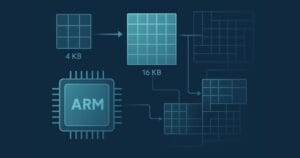Following a year of development and several schedule slippages, Mozilla will release the final version of Firefox 4.0 later today at GetFirefox.com. If you can’t wait, I’m going to let you in on a little secret … Firefox 4.0 is already available to download from Mozilla’s FTP servers. Don’t tell anyone else!
We’ve been using Firefox 3.x for a long time. Version 3.0 was released in June 2008, 3.5 arrived a year later, and 3.6 came out in January 2010. The browser has begun to look a little dated following rise of Chrome, Opera’s new interface, and IE9’s release last week. Firefox may remain the top browser for development, but its speed has been criticized and many users have switched to Chrome.
Firefox 4.0 could redress the situation. It includes:
- A new, streamlined user interface.
- Enhanced performance courtesy of the new JägerMonkey JavaScript engine and graphics hardware acceleration.
- Application tabs and tab grouping.
- Built-in bookmark, open tabs, history, preferences and password synchronization.
- Improved privacy controls and security.
- Improved HTML5 capabilities such as new form elements, high-definition hardware-accelerated WebM video and 3D WebGL.
- CSS3 transitions and transformations.
- A revamped add-ons manager.
- Multi-touch for some touchscreen devices.
- A new web console.
- Crash protection.
What’s more, it’s available in more than 70 languages and can be installed on most operating systems. Including Windows XP.
Obviously, another browser means more effort for web developers. However, you can install v3.6 and v4.0 side-by-side, you’re unlikely to experience radical rendering differences and, with luck, Mozilla will push Firefox 4.0 out as an automated update within a few weeks.
Will you install Firefox 4.0? Will it help the browser increase its market share? Or is it too little, too late? Watch out for a full review on SitePoint soon…
Frequently Asked Questions about Firefox 4
What are the system requirements for Firefox 4?
Firefox 4 requires a minimum of a Pentium 4 processor, 512 MB of RAM, and 200 MB of hard drive space. It is compatible with Windows 2000, XP, Server 2003, Vista, 7, and 8. For Mac users, it requires an Intel x86 processor, 512 MB of RAM, and 200 MB of hard drive space. It is compatible with Mac OS X 10.5 and later. For Linux users, it requires an Intel Pentium 4 or later processor, 512 MB of RAM, and 200 MB of hard drive space.
Where can I download older versions of Firefox like Firefox 4?
Older versions of Firefox, including Firefox 4, can be downloaded from the official Mozilla FTP server. However, it’s important to note that using older versions of Firefox may expose you to security vulnerabilities that have been fixed in more recent versions.
What are the new features in Firefox 4?
Firefox 4 introduced several new features, including a redesigned user interface, improved performance, and enhanced support for HTML5 and CSS3. It also introduced a new JavaScript engine called JägerMonkey, and hardware-accelerated graphics.
How does Firefox 4 compare to other versions of Firefox?
Firefox 4 was a significant upgrade from its predecessor, Firefox 3.6. It introduced a new user interface, improved performance, and added support for new web technologies. However, subsequent versions of Firefox have continued to improve on these features and add new ones.
Is Firefox 4 still supported?
No, Firefox 4 is no longer supported. Mozilla stopped supporting Firefox 4 shortly after the release of Firefox 5. It’s recommended to use the latest version of Firefox to benefit from the most recent features and security updates.
Can I install Firefox 4 on my current operating system?
While it’s technically possible to install Firefox 4 on most operating systems, it’s not recommended due to potential security vulnerabilities. It’s always best to use the latest version of Firefox, which will be compatible with the most recent operating systems.
What were the main criticisms of Firefox 4?
Some users found the new user interface in Firefox 4 to be confusing and less intuitive than previous versions. There were also complaints about performance issues, particularly with regards to startup time and memory usage.
How can I migrate my data from Firefox 4 to a newer version of Firefox?
When you install a new version of Firefox, it should automatically import your bookmarks, history, passwords, and other data from the previous version. If this doesn’t happen, you can manually import your data using the Import wizard in the Bookmarks menu.
What is the history of Firefox 4’s development?
Firefox 4 was released in March 2011, after a development process that lasted over a year. It was a major update that introduced a new user interface, improved performance, and added support for new web technologies.
How can I troubleshoot problems with Firefox 4?
If you’re experiencing problems with Firefox 4, you can try resetting it to its default state, disabling add-ons, or creating a new user profile. However, because Firefox 4 is no longer supported, it’s recommended to upgrade to the latest version of Firefox if you’re experiencing problems.
Craig is a freelance UK web consultant who built his first page for IE2.0 in 1995. Since that time he's been advocating standards, accessibility, and best-practice HTML5 techniques. He's created enterprise specifications, websites and online applications for companies and organisations including the UK Parliament, the European Parliament, the Department of Energy & Climate Change, Microsoft, and more. He's written more than 1,000 articles for SitePoint and you can find him @craigbuckler.







